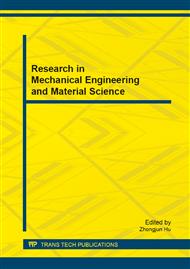p.378
p.382
p.388
p.392
p.399
p.406
p.411
p.416
p.421
Electrochemical Analysis of the Phase Structures in Galvannealed Coatings
Abstract:
The electrolytic stripping technique (also known as coulometric dissolution) was a method to analysis the phase structure of galvannealed coating quantitatively, but the experimental data of electrolytic stripping cannot be used for straightforward Fe-Zn phase identification, and because quantification needs to take into account the effect of various electrochemical side-reactions. The applicability of electrolytic stripping for the phase analysis of galvannealed coatings was optimized in this article, Result show that electrolytic stripping technique can be applied to realize step-by-step dissolution of various phases species in the galvannealed coatings under the condition that the potential scanning rate was low enough, and the method allows the determination of the total Fe concentration, and the thickness and structure of the η, ζ, δ and Γ phases. Both the thickness and the various intermetallic phases content of the galvannealed coatings with different aluminum contents was characterized by the polarization curve of the electrolytic stripping technique and the proposed data analysis method, and combine the initial dissolution potential of every Fe-Zn phase in galvannealed coating.
Info:
Periodical:
Pages:
399-405
Citation:
Online since:
October 2013
Authors:
Price:
Сopyright:
© 2014 Trans Tech Publications Ltd. All Rights Reserved
Share:
Citation:


